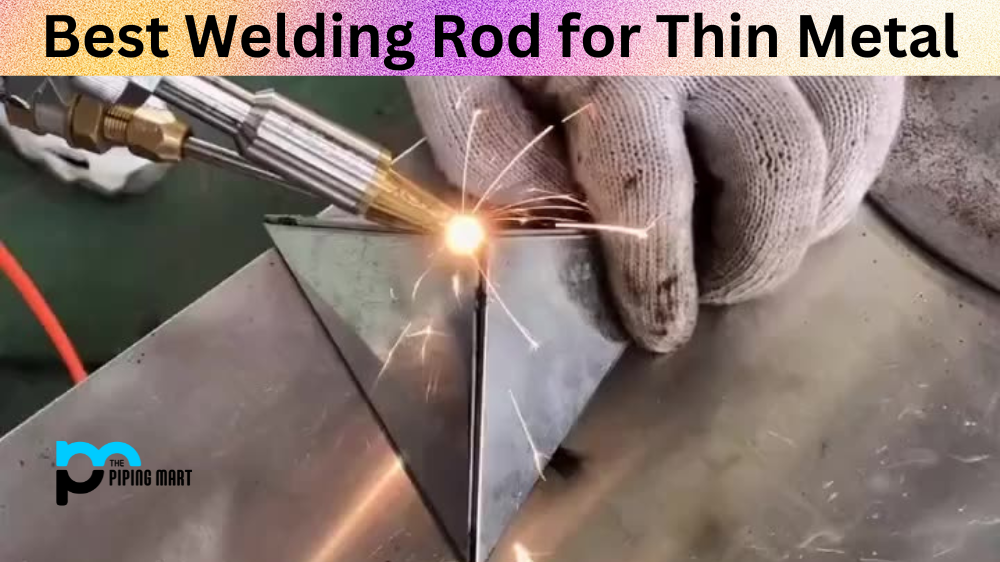Welding thin metal can be challenging, but you can achieve a strong and durable weld with the right tools and techniques. Choosing the right welding rod is one of the most important factors in welding thin metal. With so many options available, figuring out which is best for your project can be overwhelming. In this guide, we’ll explore the various types of welding rods and offer tips on selecting the perfect one for welding thin metal.
Understand Your Metal
Before you start welding, it’s important to understand the composition of the metal you’re working with. Different metals require different welding rods and techniques. For instance, a steel rod would not be appropriate for welding aluminium. Thin metal is typically more difficult to weld than thicker material because it heats up and melts faster. This is why it’s crucial to choose a welding rod that’s specifically designed for thin metal.
Choose the Correct Material
Welding rods come in various materials, such as aluminium, brass, copper, steel, and nickel. The material you choose will depend on the specific project and the type of metal you’re welding. Choosing a rod with a lower amperage range is best for thin metal. This will create a smoother weld and reduce the risk of burning through the metal. In general, copper-coated or brass welding rods are ideal for welding thin sheet metal.
Consider Welding Technique
Your welding technique will also influence the type of welding rod you choose. For instance, TIG welding requires a different rod type than MIG welding. TIG welding is commonly used for thin metal because it provides a precise and clean weld. The best welding rod for TIG welding thin metal is a pure tungsten rod or a zirconium tungsten rod. MIG welding, on the other hand, is faster and easier to use but may not be as precise as TIG welding. For MIG welding, a copper-coated steel wire is ideal for welding thin metal.
Check Your Welder’s Manual
Your welder’s manual is valuable when selecting the best welding rod for thin metal. The manual will provide information on which welding rods are compatible with your machine and guide selecting the right amperage for your weld. It will also provide information on the correct welding technique for your specific weld.
Don’t Skimp on Quality
Finally, it’s important to focus on quality when selecting a welding rod. Low-quality rods may cost less upfront, but they may produce a poor-quality weld or be more difficult to work with, ultimately costing you more time and money. Choose a reputable brand and be willing to invest a bit more in a high-quality welding rod for your thin metal project.
Types of Welding Rod for Thin Metal
E6011
E6011 welding rod is a low-hydrogen electrode that can be used on dirty or rusty metal. It is also known as a cellulose electrode because it contains cellulose as a major ingredient. This type of welding rod is often used for root passes on pipe welds.
E7018
E7018 welding rod is an all-position, low-hydrogen electrode that can be used on dirty or rusty metal. It is also known as a low-hydrogen iron powder electrode because it contains iron powder as a major ingredient. This type of welding rod is often used for welding in difficult positions or when high weld strength is required.
E7024
E7024 welding rod is an all-position, high-deposition rate, low-hydrogen electrode that can be used on dirty or rusty metal. It is also known as a high-speed electrode because it has a high deposition rate. This type of welding rod is often used for welding in difficult positions or when high weld strength is required.
E8018
E8018 welding rod is an all-position, low-hydrogen electrode that can be used on dirty or rusty metal. It is also known as a low-hydrogen iron powder electrode because it contains iron powder as a major ingredient. This type of welding rod is often used for welding in difficult positions or when high weld strength is required.
Conclusion
Welding thin metal can be tricky and fussy, but it can be done with the right tools and techniques. Choosing the right welding rod is essential to achieving a high-quality and durable weld. Considering material, welding technique, and amperage, you’ll be ready to select the best welding rod for your thin metal project. Remember to focus on quality and consult your welder’s manual for guidance. With these tips in mind, you’ll surely achieve a strong and reliable weld every time.

Hey, I’m Krutik, a casual blogger expert in the metal industry. I am passionate about providing valuable information to my readers. With a background in engineering and construction, I like playing Cricket & watching Netflix shows in my free time. Thank you for visiting my blog, and I hope you find my information helpful!




